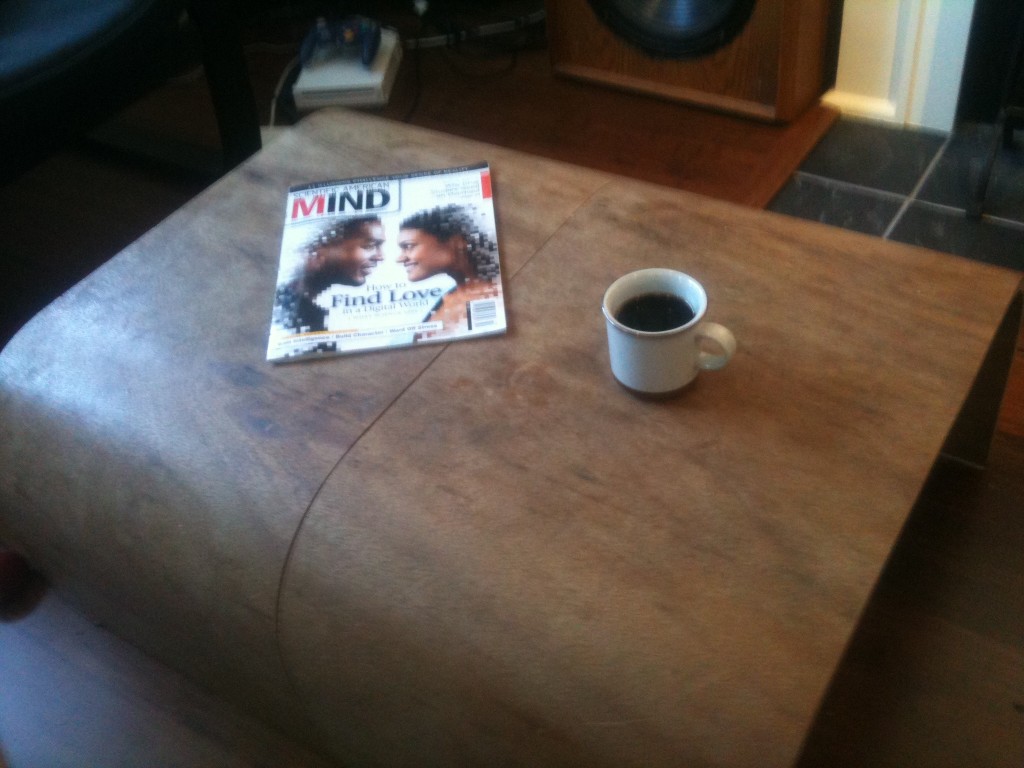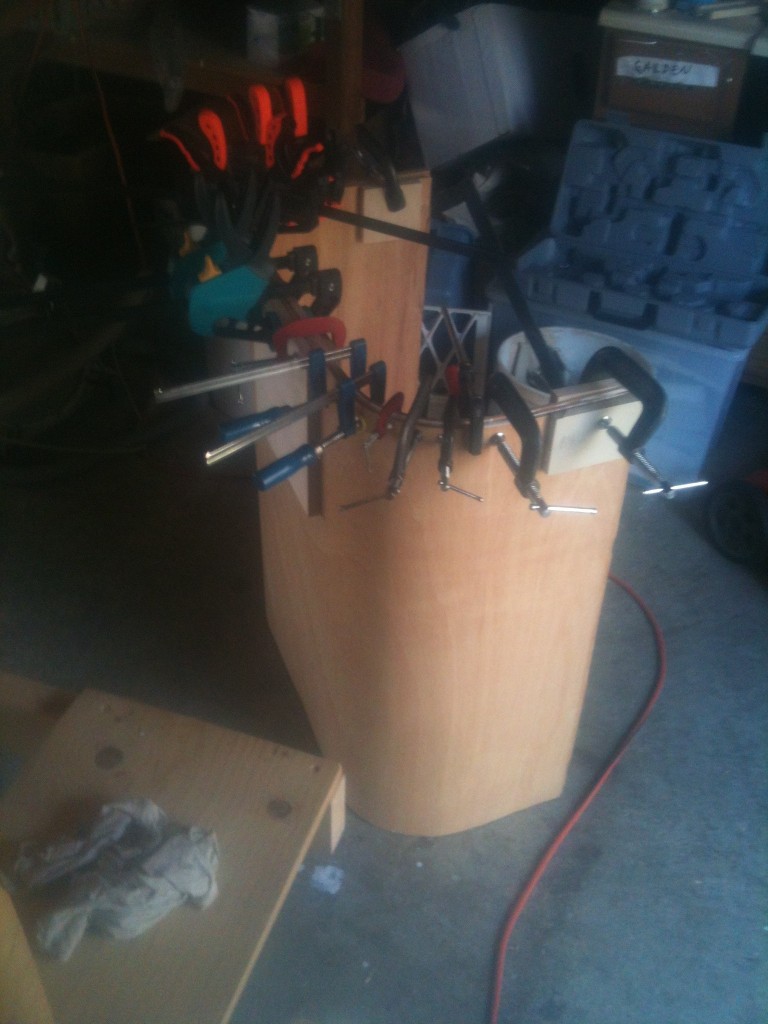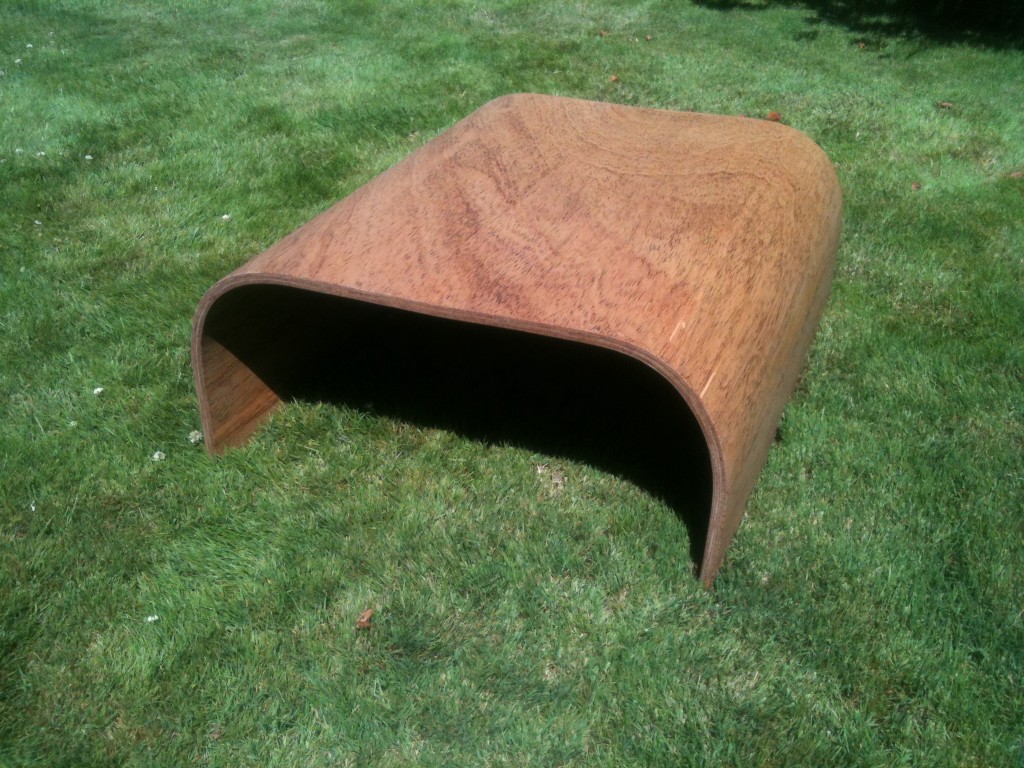In 2004, I took a class on furniture design at Emily Carr University of Art and Design, as part of a design certificate program I completed. As part of the course, I constructed a molded plywood coffee table, and while it is only a rough prototype, I have used it ever since. The elemental form and natural durability have been admired by many of my friends, and raw plywood surface has gradually acquired a grungy but attractive coffee-stained patina over the years.
My girlfriend was perceptive enough to notice her mother also admired the thing, and asked me to make another one as a birthday present. And so I set to work, with the benefit of the experience of making one already and considerably more patience than when I first made it.
The first step was to make a mold. I used scrap plywood from the pile in the garage shop.
Glue-up is a harrowing half-hour of frantically muscling things into place with tangled cargo tie downs, blocks, and whatever clamps are on hand.
When I removed the shell from the mold, there were some issues along the edges. More glue, perhaps with the assistance of cooler temperatures, would help get better clamping. There are also adjustments to make to the mold to ensure even pressure. Fixing the edges is easy: thin out some glue and let it soak in between the layers, then clamp it up again. The old woodworking adage is true: you can never have too many clamps.
After tuning up both ends, I clamped the table to a custom jig to rip the base square on the table saw, and then some careful handiwork with a jigsaw to trim the ends nice and flat.
Final finishing requires a few more hours hands-on to steam out any dents, sand out  any saw marks from the ends, and prep those curves for a Danish oil finish.
These tables are available to purchase, made to order, custom finishes available.






